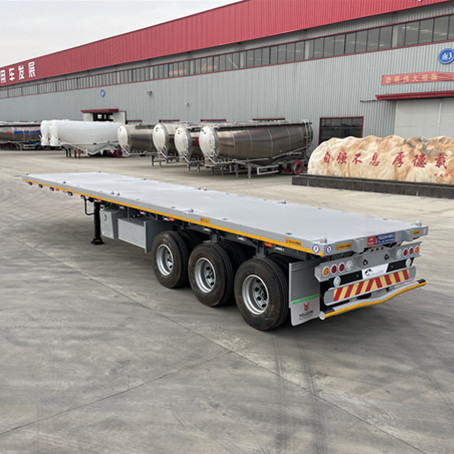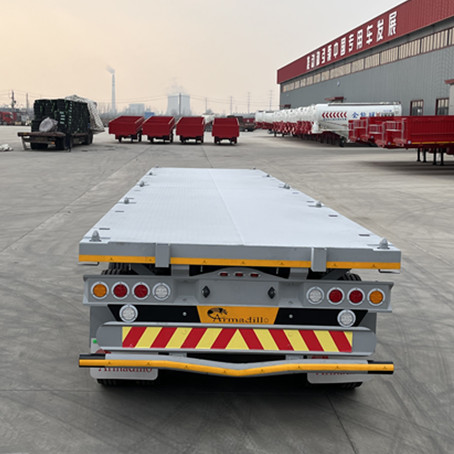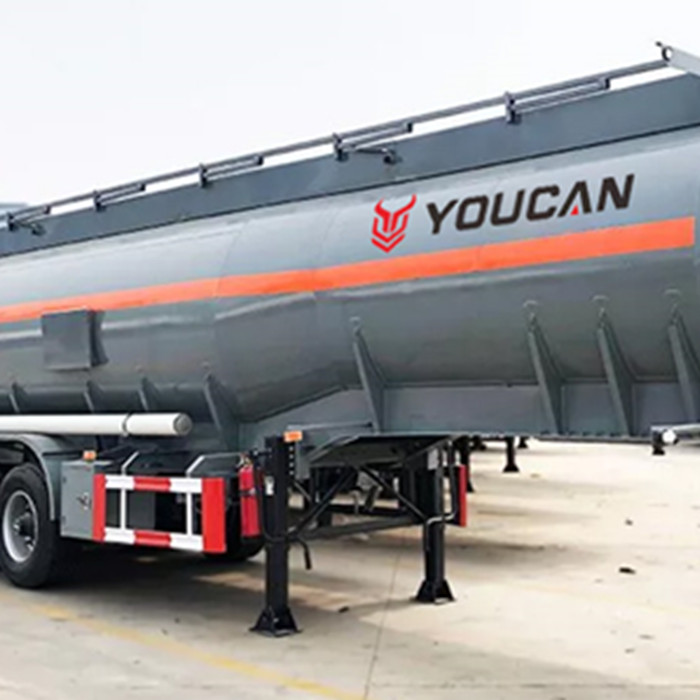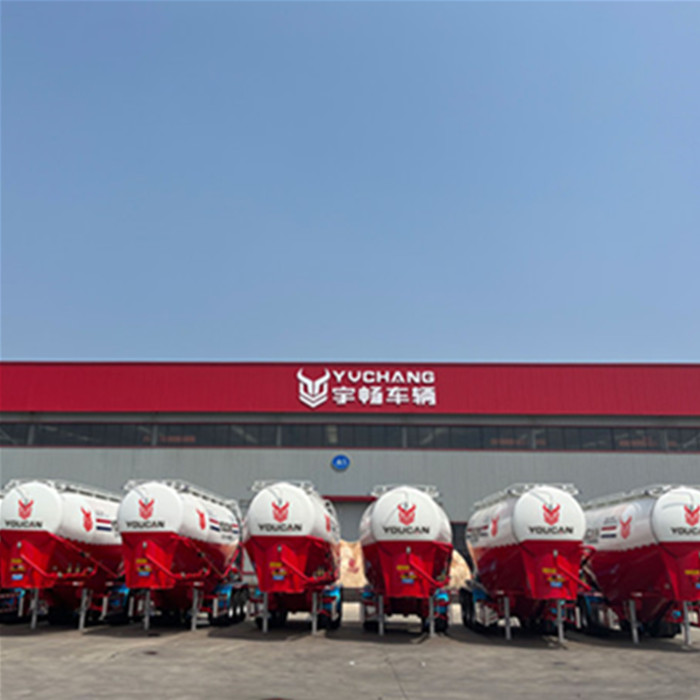Tips For Safely Strap Down Loads On A Flatbed Trailer
What is a flatbed trailer
A flatbed trailer, also known as a flatbed semi-trailer, or a flatbed container trailer; it is an open deck equipment without a roof and sides. The main purpose is to transport containers, bulk cargo, construction supplies, and some larger and more comprehensive items, and it is one of our most commonly used semi-trailers.

Every year, approximately 25,000 road accidents in the United States are closely related to road litter. Some of these accidents are fatal.
In the UK, 22,000 accidents caused by objects falling from heavy equipment trailers were reported in 2015.
It is critical to take various measures to protect the load on heavy-duty equipment.
In particular, keeping loads in place not only protects drivers and pedestrians from accidents, but also eliminates associated costs.
Management requirements:
1. When loading and unloading goods, a special person should be assigned to be responsible for the work of loading and unloading trucks. The loading and unloading personnel should ensure that the materials and goods are stacked smoothly, without rolling or sliding, and the loading and unloading trucks are stacked from bottom to top and in layers; the loading and unloading trucks are completed and bundled firmly.
2. Up and down unloading, layered unloading, to keep the center of gravity of the vehicle stable, no eccentric load.
3. When using lifting equipment to cooperate with the operation, strictly implement the 6 "prohibitions":
It is strictly forbidden for operators to stand on the running line of the hoisted goods or drill under the hoisted goods;
It is forbidden to stand at the corner and the side of the crane; it is forbidden to stand on the lifting object;
Manual calibration of lifting objects over 0.5 meters is prohibited;
Picking up and placing mats with hands and feet directly under the hoisted cargo is prohibited;
Arbitrary placement is prohibited. commodity.

Specific requirements:
(1) Before the operation, check whether the labor protection equipment of the workers is neatly worn, and shall not work with bare hands, bare hands or slippers, and shall not work without proper labor protection.
(2) Carry out a thorough and timely inspection of tools and spreaders, find faults and damages, and replace or scrap them in time to ensure safe operation.
(3) Human handling and handling should be done according to one’s capabilities, cooperate with others, and should not take the risk of illegal operations; when the vehicle is not stably parked and in place, it is not allowed to get off or get off the vehicle; when the vehicle needs to be transferred, necessary protective measures should be taken , to ensure the safety of personnel and goods; after the vehicle is loaded and unloaded, necessary protective measures should be taken. Tie firmly.
(4) In the hoisting operation, the operation rules and relevant regulations must be strictly implemented, and there must be a special person responsible for the operation, hoisting, anchoring and hoisting of the equipment, as well as the load operation and allowable load of the vehicle during the hoisting operation. Strictly follow the equipment regulations.
(5) The loading, unloading, handling and operating personnel on the job site shall be strict in labor discipline, obey orders, and shall not savagely load, unload, damage or destroy the goods, and shall not load and unload the goods without authorization or abandon the vehicle without authorization. Loading, unloading, playing, chasing, fighting at the job site.
(6) Strictly abide by safety and fire regulations, do not smoke in warehouses and workplaces, and use all firearms.
(7) Observe the operation process in time to find out potential safety hazards. The operation must be stopped immediately and removed before continuing.
(8) After each operation is completed, the site should be inspected and cleaned up without leaving any tools, hangers, packages and garbage, so that there is a beginning and an end.

 WhatsApp
WhatsApp
 sales@youcantrailer.com
sales@youcantrailer.com
 +8615203709888
+8615203709888


